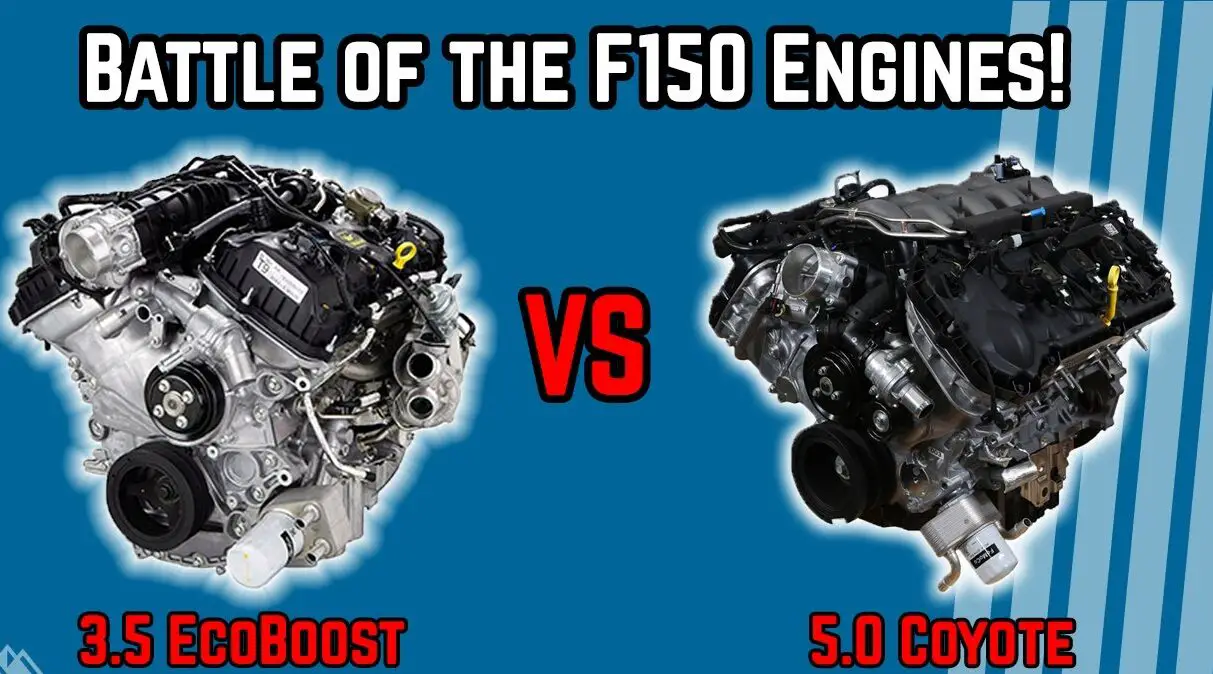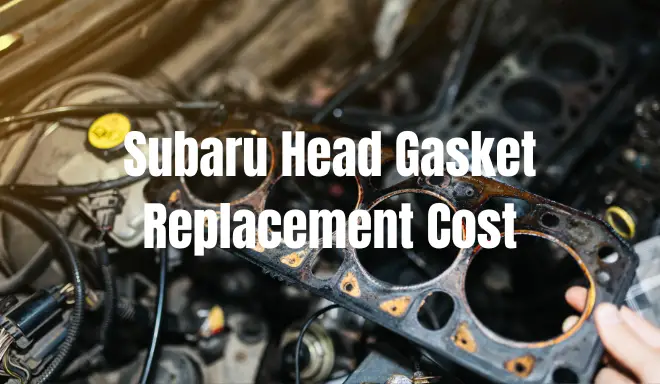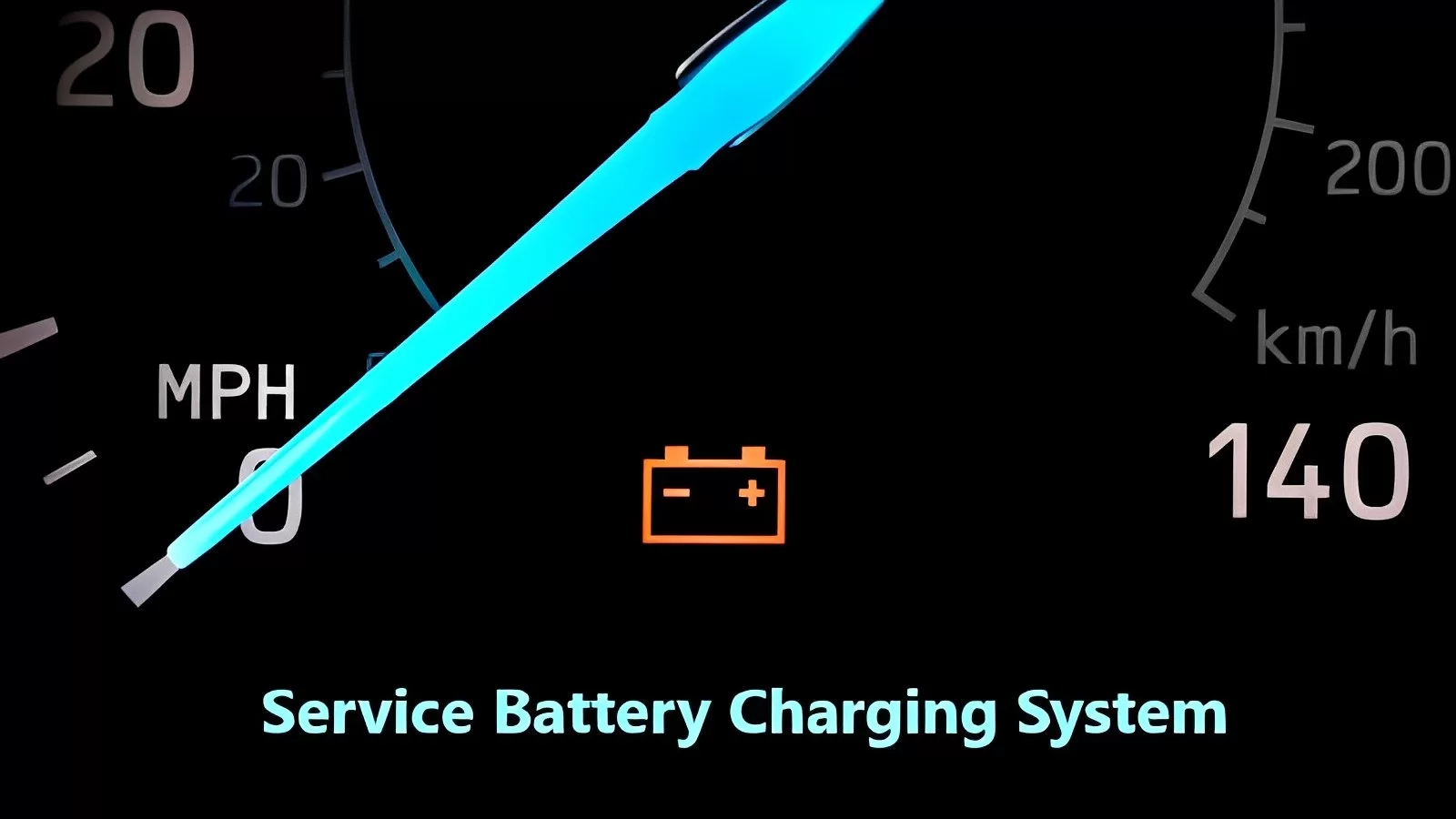If you are looking for a powerful and efficient engine for your Ford F-150, you might be wondering which one to choose: the 3.5 Ecoboost or the 5.0 Coyote.
These two engines have been competing for the hearts and wallets of truck enthusiasts for almost a decade, and each one has its strengths and weaknesses.
In this article, we will compare the 3.5 Ecoboost vs 5.0 in terms of performance, fuel economy, reliability, and aftermarket potential.
We will also help you decide which engine is better for your needs and preferences.
Whether you prefer a classic V8 or a modern turbocharged V6, you will find the answers you are looking for in this comprehensive guide.
Performance Showdown
3.5 Ecoboost: The Turbocharged Beast
The 3.5 Ecoboost engine has gained a reputation for its impressive power delivery and torque. Thanks to its twin-turbo setup, this V6 engine provides a remarkable combination of high horsepower and efficient fuel combustion. The turbochargers enable quick acceleration and responsiveness, making it an ideal choice for those who crave a spirited driving experience.
5.0 Coyote: The Roaring V8
On the other hand, the 5.0 Coyote boasts the classic V8 growl that resonates with truck enthusiasts. Known for its raw power, the naturally aspirated Coyote engine offers a linear power curve and a distinctive exhaust note. If you’re a fan of traditional V8 performance, the Coyote might be the choice that tugs at your heartstrings.
Head-to-Head Performance Comparison
When it comes to pure performance metrics, both engines have their strengths. The 3.5 Ecoboost may have the edge in acceleration and torque, thanks to its turbocharging, while the 5.0 Coyote might excel in delivering a classic, throaty V8 performance with a linear power delivery.
Which is faster 2.7 or 3.5 EcoBoost?
The 3.5 EcoBoost offers slightly faster acceleration than the 2.7 EcoBoost. The 3.5 EcoBoost can go from 0-60 mph in approximately 5.6 seconds, while the 2.7 EcoBoost can do it in approximately 6.3 seconds. However, the difference may not be very noticeable in everyday driving, and both engines offer excellent performance and fuel efficiency.
Also Read: How to Make A 3.5 V6 Faster?
Fuel Economy Face-Off
3.5 Ecoboost: Efficiency Champion

One of the key advantages of the 3.5 Ecoboost is its efficiency. The smaller displacement and turbocharging technology contribute to better fuel economy, making it an attractive option for those conscious of their MPG. If long highway drives and fuel efficiency are high on your priority list, the 3.5 Ecoboost could be the economical choice.
5.0 Coyote: Traditional Thirst
While the 5.0 Coyote delivers on power, it tends to be less fuel-efficient compared to its turbocharged counterpart. The V8’s larger displacement and natural aspiration mean it may not be as frugal at the pump. If fuel economy is a significant concern, you might want to weigh this factor carefully.
The Verdict on Efficiency
In the battle for fuel efficiency, the 3.5 Ecoboost emerges as the winner. Its smaller engine size and forced induction provide a commendable balance between power and economical fuel consumption.
Reliability: The Long Haul Test
3.5 Ecoboost: Proven Resilience
The 3.5 Ecoboost has established itself as a reliable workhorse over the years. Its robust design, coupled with advanced engineering, has garnered a positive reputation for durability. Truck owners who prioritize a dependable engine for their daily needs often find solace in the consistent performance of the Ecoboost.
5.0 Coyote: The Time-Tested V8
As a naturally aspirated V8, the 5.0 Coyote benefits from a simpler design, potentially reducing the chances of certain turbo-related issues. The Coyote engine has been a stalwart in Ford’s lineup, showcasing longevity and endurance. For those who want a tried-and-true V8, the Coyote may be the more appealing option.
The Reliability Verdict
In the reliability department, both engines hold their own, but the Ecoboost’s reputation for resilience gives it a slight edge for those seeking long-term dependability.
How long will a 3.5 EcoBoost last?
The 3.5 EcoBoost engine is designed to last a long time, with an average lifespan of around 250,000 miles. However, this figure may vary depending on the maintenance, driving habits, and modifications of the vehicle.
Some owners have reported reaching over 300,000 miles with their 3.5 EcoBoost engines. To extend the longevity of your engine, it is recommended to follow the manufacturer’s service schedule, use high-quality oil and fuel, and avoid excessive idling or towing.
The 3.5 EcoBoost engine is a powerful and efficient choice for your Ford F-150, but it also requires proper care and attention.
Is the Ford 5.0 V8 a good engine?
The Ford 5.0 V8, also known as the Coyote, is a good engine that offers power, performance, and reliability. It is the only V8 option for the 2021 Ford F-150, and it produces 400 hp and 410 lb-ft of torque. It also has a distinctive sound that many drivers enjoy.
The Ford 5.0 V8 has some advantages over the other engine options for the F-150, such as the 3.5 EcoBoost V6 or the PowerBoost hybrid. It is cheaper by $600, it runs on regular gas, and it has a simple design that is easier to maintain and modify.
However, the Ford 5.0 V8 also has some drawbacks, such as lower fuel economy and less torque than the EcoBoost or the PowerBoost engines. It also has less towing capacity and payload than the other engines.
Important: Flashing Check Engine Light Ford F150: What Does It Mean, Causes & Solutions
Towing and Hauling Capabilities
3.5 Ecoboost: Turbocharged Towing
The 3.5 Ecoboost shines when it comes to towing capacity. The twin-turbo setup provides ample low-end torque, making it well-suited for hauling heavy loads. If you frequently tow trailers, boats, or other sizable cargo, the Ecoboost’s turbocharged might be a game-changer for your towing needs.
5.0 Coyote: V8 Muscle for Hauling
While the 5.0 Coyote doesn’t fall behind in towing capabilities, its naturally aspirated V8 power delivery offers a different feel compared to the turbocharged Ecoboost. If you’re looking for a more traditional, muscular towing experience, the Coyote’s V8 prowess might be more in line with your expectations.
Towing Verdict
Both engines are more than capable of handling towing and hauling tasks, but your preference might lean towards the Ecoboost for its turbocharged torque advantage or the Coyote for its classic V8 muscle.
Cost of Ownership

3.5 Ecoboost: Efficiency Pays Off
While the initial cost of the 3.5 Ecoboost-equipped F-150 might be slightly higher, its efficiency can translate into long-term savings at the pump. If you plan on putting a significant number of miles on your truck, the potential fuel savings could offset the initial investment over time.
5.0 Coyote: Classic Power at a Cost
The 5.0 Coyote, with its larger displacement and potentially lower fuel efficiency, might have a higher cost of ownership in terms of fuel expenses. However, the simplicity of its design might lead to fewer maintenance-related costs in the long run.
Cost of Ownership Verdict
Consider not only the upfront cost but also the long-term implications of fuel efficiency and potential maintenance expenses when making your decision.
Technology and Features
3.5 Ecoboost: Modern Technology
The 3.5 Ecoboost, being a more modern and technologically advanced engine, might come with additional features and innovations. Look for features like auto start-stop, cylinder deactivation, or other advancements that contribute to both performance and efficiency.
5.0 Coyote: Timeless Simplicity
The 5.0 Coyote, while not as technologically intricate as the Ecoboost, carries a timeless simplicity that some drivers appreciate. If you prefer a more straightforward driving experience without the bells and whistles, the Coyote might be your go-to.
Technology Verdict
Consider whether you value the cutting-edge technology and features that come with the Ecoboost or prefer the classic, straightforward approach of the Coyote.
Environmental Impact
3.5 Ecoboost: Turbocharged Efficiency
From an environmental standpoint, the 3.5 Ecoboost’s smaller displacement and turbocharging contribute to better fuel efficiency, potentially reducing overall emissions. If environmental impact is a significant concern for you, the Ecoboost might align more with your eco-friendly values.
5.0 Coyote: Classic Power, Classic Emissions
The naturally aspirated design of the Coyote might result in slightly higher emissions compared to the turbocharged Ecoboost. Consider your environmental priorities and how each engine’s characteristics align with your values.
Environmental Impact Verdict
If eco-friendliness is a top priority, the 3.5 Ecoboost might be the more environmentally conscious choice.
Aftermarket Potential: Customizing Your Power
3.5 Ecoboost: Turbocharged Tuning
Enthusiasts looking to extract more power from their 3.5 Ecoboost have a wealth of aftermarket options. Turbo upgrades, intercoolers, and custom tuning can unlock hidden potential, transforming the Ecoboost into a high-performance machine. The turbocharged nature of the engine makes it particularly receptive to modifications.
5.0 Coyote: Classic V8 Modifications
The aftermarket scene for the 5.0 Coyote is vibrant, with a plethora of options for those who crave additional horsepower and a distinctive exhaust note. Cold air intakes, exhaust systems, and performance tunes are popular choices among Coyote owners looking to enhance their driving experience.
Final Thoughts on Aftermarket Potential
Both engines offer ample opportunities for customization, but the choice ultimately depends on your preference. Whether you lean towards turbocharged tuning or classic V8 modifications, the aftermarket scene has something to offer for every enthusiast.
Making Your Decision
Consider Your Priorities
In the battle of 3.5 Ecoboost vs 5.0 Coyote, the decision ultimately comes down to your priorities. If you value efficiency, turbocharged power, and the potential for aftermarket tuning, the 3.5 Ecoboost may be your ideal choice. On the other hand, if you crave the timeless roar of a V8, don’t mind sacrificing some fuel efficiency, and appreciate a simpler, time-tested design, the 5.0 Coyote could be the engine that steals your heart.
Test Drive and Experience
Before making your final decision, consider taking both engines for a test drive. Feel the power delivery, listen to the exhaust notes, and gauge how each engine suits your driving style. Personal experience can often be the deciding factor in such a choice.
Consult with Experts
If you’re still torn between the two, don’t hesitate to consult with automotive experts or your local Ford dealership. They can provide insights based on your specific needs, helping you make an informed decision.
Conclusion
The 3.5 Ecoboost vs 5.0 debate is not an easy one to settle, as both engines have their pros and cons.
The 3.5 Ecoboost offers more torque, fuel efficiency, and towing capacity, while the 5.0 Coyote offers more power, sound, and simplicity.
The best engine for you depends on your personal preferences and needs, as well as your budget and driving habits.
No matter which engine you choose, you will get a reliable and capable engine that will serve you well for many years.
The Ford F-150 is a versatile and customizable truck that can suit any driver’s taste and style.




